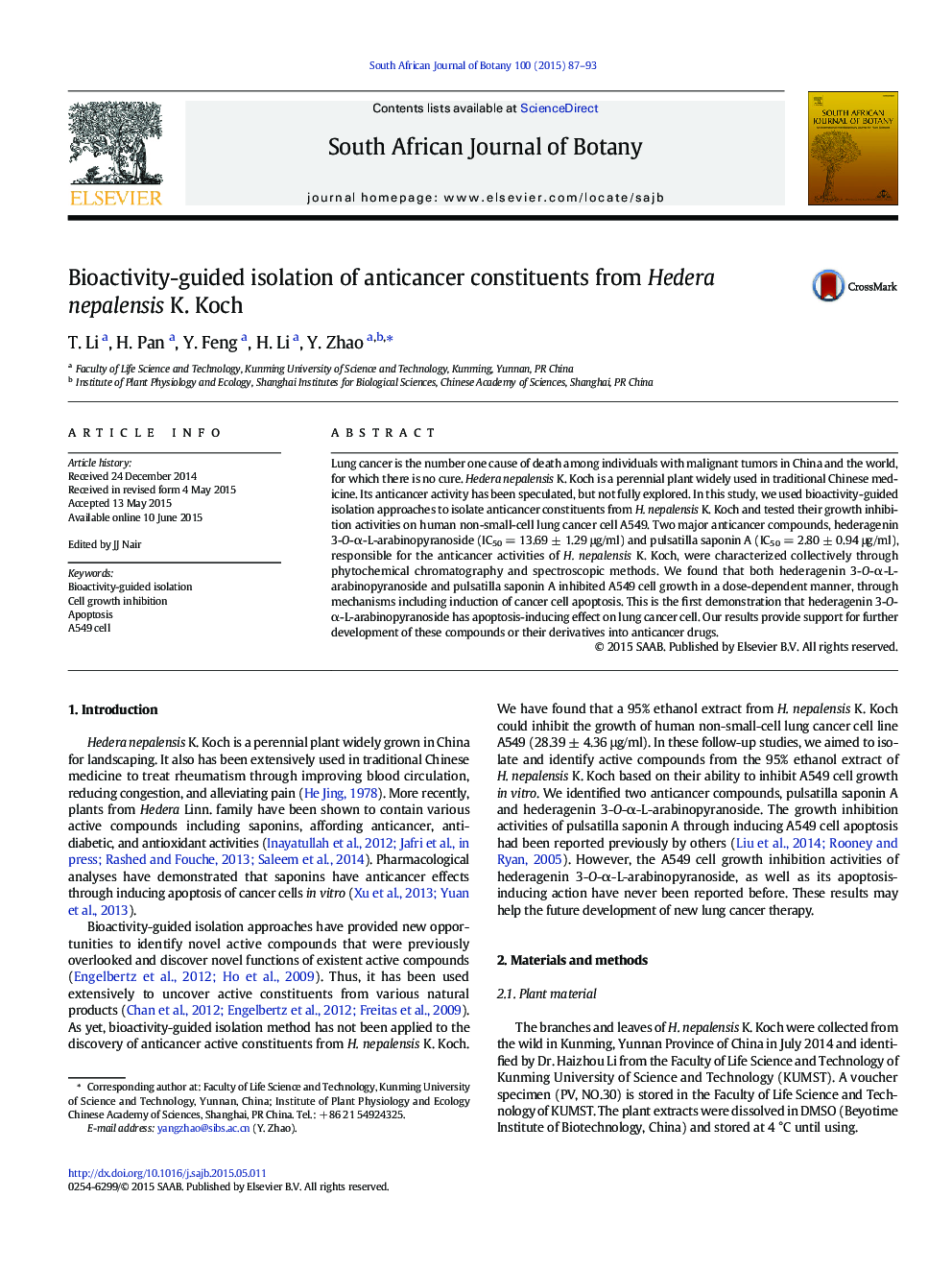| Article ID | Journal | Published Year | Pages | File Type |
|---|---|---|---|---|
| 4520376 | South African Journal of Botany | 2015 | 7 Pages |
•95%EtOH extract of Hedera nepalensis K. Koch showed growth inhibitory activity to A549 cell.•Two known saponins with anticancer activity were isolated from Hedera nepalensis K. Koch.•One saponin-inducing lung cancer cell apoptosis has not been reported before.
Lung cancer is the number one cause of death among individuals with malignant tumors in China and the world, for which there is no cure. Hedera nepalensis K. Koch is a perennial plant widely used in traditional Chinese medicine. Its anticancer activity has been speculated, but not fully explored. In this study, we used bioactivity-guided isolation approaches to isolate anticancer constituents from H. nepalensis K. Koch and tested their growth inhibition activities on human non-small-cell lung cancer cell A549. Two major anticancer compounds, hederagenin 3-O-α-L-arabinopyranoside (IC50 = 13.69 ± 1.29 μg/ml) and pulsatilla saponin A (IC50 = 2.80 ± 0.94 μg/ml), responsible for the anticancer activities of H. nepalensis K. Koch, were characterized collectively through phytochemical chromatography and spectroscopic methods. We found that both hederagenin 3-O-α-L-arabinopyranoside and pulsatilla saponin A inhibited A549 cell growth in a dose-dependent manner, through mechanisms including induction of cancer cell apoptosis. This is the first demonstration that hederagenin 3-O-α-L-arabinopyranoside has apoptosis-inducing effect on lung cancer cell. Our results provide support for further development of these compounds or their derivatives into anticancer drugs.
